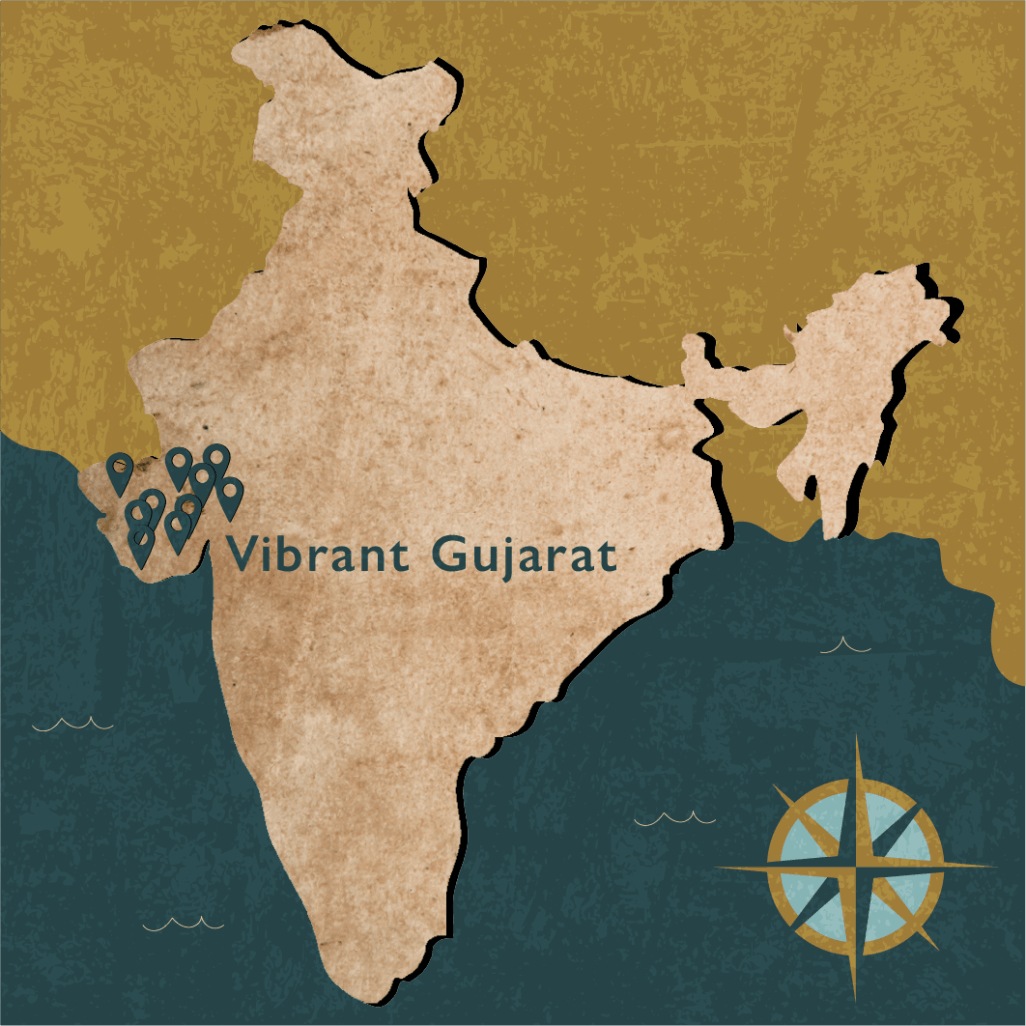



Arrive Ahmedabad by an international flight. After clearing immigration and customs formalities you are met by a representative from First Tours India and transferred to The House of MG. Built in 1924 as a private home of a wealthy textile magnate The House of MG is a premier boutique heritage hotel in Ahmedabad. One of the oldest buildings in the city, it wonderfully represents the colonial heritage architecture of the early 20th century. Ahmedabad, the UNESCO declared World Heritage City, was the state capital until 1970. Founded in 1411 by Sultan Ahmed Shah, the city spreads along both banks of Sabarmati River. A Quintessential mix of the Old and New, it has a lot to offer to an art lover and cultural architecture. A sojourn into the old walled city reveals an intriguing labyrinth of by-lanes and exquisitely carved wooden mansions which is full of architectural delights. Ahmedabad has many monuments constructed using a blend of Hindu and Muslim influences.
The House of MG

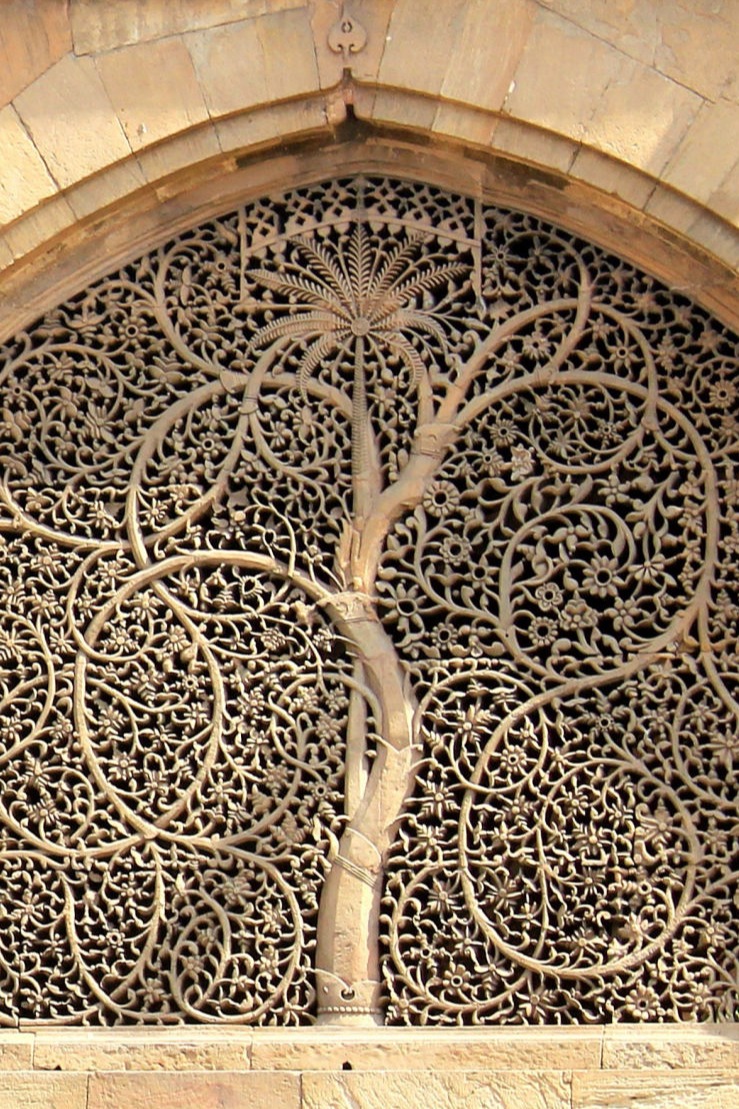
Begin the day with a heritage walking tour of the fascinating old quarter redolent with Gujarat's traditional culture and history. A maze of narrow winding alleys with thriving bazaars, pols, exquisitely carved façades, temples, mosques and subterranean step-wells mark the old city. Visit the Jami masjid built by Sultan Ahmed Shah in 1423. This yellow sandstone structure ingeniously used pieces retrieved from demolished Hindu and Jain temples. Proceed to the Tomb of Ahmed Shah where the sultan, his son and grandson are buried. Continue on to Rani Sipri's mosque, also known as Masjid-e-Nagina or "jewel of a mosque" because of its elegant proportions and slender minarets. The heritage walk ends with a visit to Siddi Saiyad's mosque, renowned for its superb yellow stone latticework. Made by a slave of Ahmed Shah in 1572, the twin jalis on the western wall depict the intertwining branches of a tree carved with extraordinary delicacy. In the afternoon visit Sabarmati Ashram founded by Mahatma Gandhi in 1917. It was from here that he orchestrated the final struggle for India's freedom. Later visit Hatheesing temple – an intricately carved marble temple dedicated to Dharmanath, the 15th Jain tirthankara. Return to your hotel visiting Adalaj Vav, Gujarat's finest stepwell. It was built in 1499 by Rudabai, the wife of a local chieftain, to conserve water, provide a cool and pleasant ambience for social interaction. A series of beautiful platforms and galleries are built into the sides of the step-well, all the way down to its subterranean depths.


Set off the day visiting the world renowned Calico Museum of Textiles. A major centre of India's textile trade and industry since the 15th century, Ahmedabad is an appropriate location for this outstanding museum. Its collection includes a number of exquisite pieces made for the British, Portuguese and India's Royal households. Enjoy viewing embroidered tents and robes of Shah Jahan, patola saris, and extravagant zari work that gilds saris in heavy gold and stitching. This afternoon visit Shreyas Folk Museum, NC Mehta Gallery and Kite Museum at Sanskar Kendra. Shreyas Folk Museum has a comprehensive collection of contemporary rural textiles from all parts of Gujarat that includes excellent beadwork, embroideries, utensils, religious objects and bullock cart accessories. The NC Mehta Gallery has a vast exquisite and ornate collection of miniature paintings from Rajasthan, Mewar, Mughal, Kangra and other schools. Proceed to Sarkhej Roja, a beautiful complex of tombs and pavilions around an artificial lake. Later in the evening visit the Vechaar Utensils Museum. This museum has a very good collection of milking vessels, Rajasthani pottery, Hindu prayer lamps, jewel boxes, betel nut crackers etc.


Travel overland to the deserted city of Champaner, a UNESCO World Heritage Site, situated at the foot of Pavagadh Hill. This city remained the capital of Gujarat until 1535, when it was conquered by Mughal emperor Humayun and fell into gradual decline. Visit the ruins of the 16th century Jami Masjid. Its richly ornamented exterior with a central dome, 172 pillars and 98 ft high minarets makes it one of the finest Islamic edifices in Western India. Also visit the elegant Nagina Masjid - a 15th century mosque made up of pure white stones in Gujarati-Islamic blend of style and Kevda Masjid, built on a rectangular plan with a double storied main prayer hall. Continue on to visit the Pavagadh Fort at the crest of the 2,690 ft Pavagadh Hill. It has a cluster of Muslim, Hindu and Jain shrines, and the ruins of an ancient fortification reflecting its chequered past. On the way up the hill are the ruins of the Sat Mahal, the seven-storied palace of the Chauhan Kings. There are also two domed granaries, the Makai Kothar and the Naulakha Kothar. Enjoy lunch at Jambughoda Palace and drive 32 miles to Vadodara. On arrival check-in to Vivanta Vadodara. After completing check-in formalities visit Maharajah Sayajirao Museum also known as Vadodara Museum and Picture Gallery at Sayaji Bagh. Exhibits here include an electric collection of Mughal miniatures, European oil paintings, a full-fledged gallery of Tibetan Art and royal artifacts. Other treasure includes the famous Akota bronzes dating the 5th Century AD, the Egyptian mummy and the 72 ft long blue-whale skeleton. Also visit the four-storey Tambekar Wada Haveli, the residence of the Diwan of Vadodara, famous for its wall paintings from the 19th century Maratha tradition depicting scenes from the Mahabharata, Lord Krishna's life and from the Anglo-Maratha war.
Vivanta Vadodara

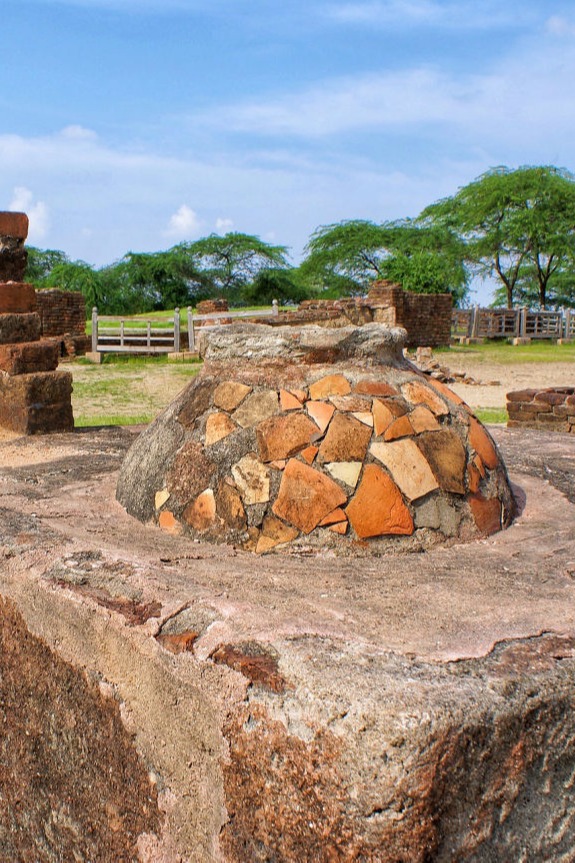
Depart Vadodara after breakfast and drive to Bhavnagar. En route, visit Lothal - the cradle of the subcontinent's oldest civilization. Lothal, literally "Mound of the Dead", is the most extensively excavated site of Harappan culture in India. It allows the most insight into the story of the Indus Valley Civilization that existed 4,500 years ago, its exuberant flight and tragic decay. Excavations at Lothal have unearthed the foundation of a well-planned city with blocks of houses, expertly constructed system of underground sanitary drainage, channels and wells, 12 public baths and an astonishing precision of standardized weights and measures. The city was surrounded by mud brick embankment to protect it from the perennial floods. In the height of its prosperity, it not only survived but was strengthened by three floods using the disaster as an opportunity to improve on the infrastructure. The fourth flood around 1,900 BC finally brought the settlement to the desperate and impoverished conditions that indicated the end of a powerful civilization. After sightseeing enjoy hot lunch at Utelia Palace and continue drive to Bhavnagar. On arrival check-in to Nilambagh Palace, once the former ruler's residence and now a heritage hotel with magnificent architecture, set amidst 10 acres of wooded environs.
Nilambagh Palace

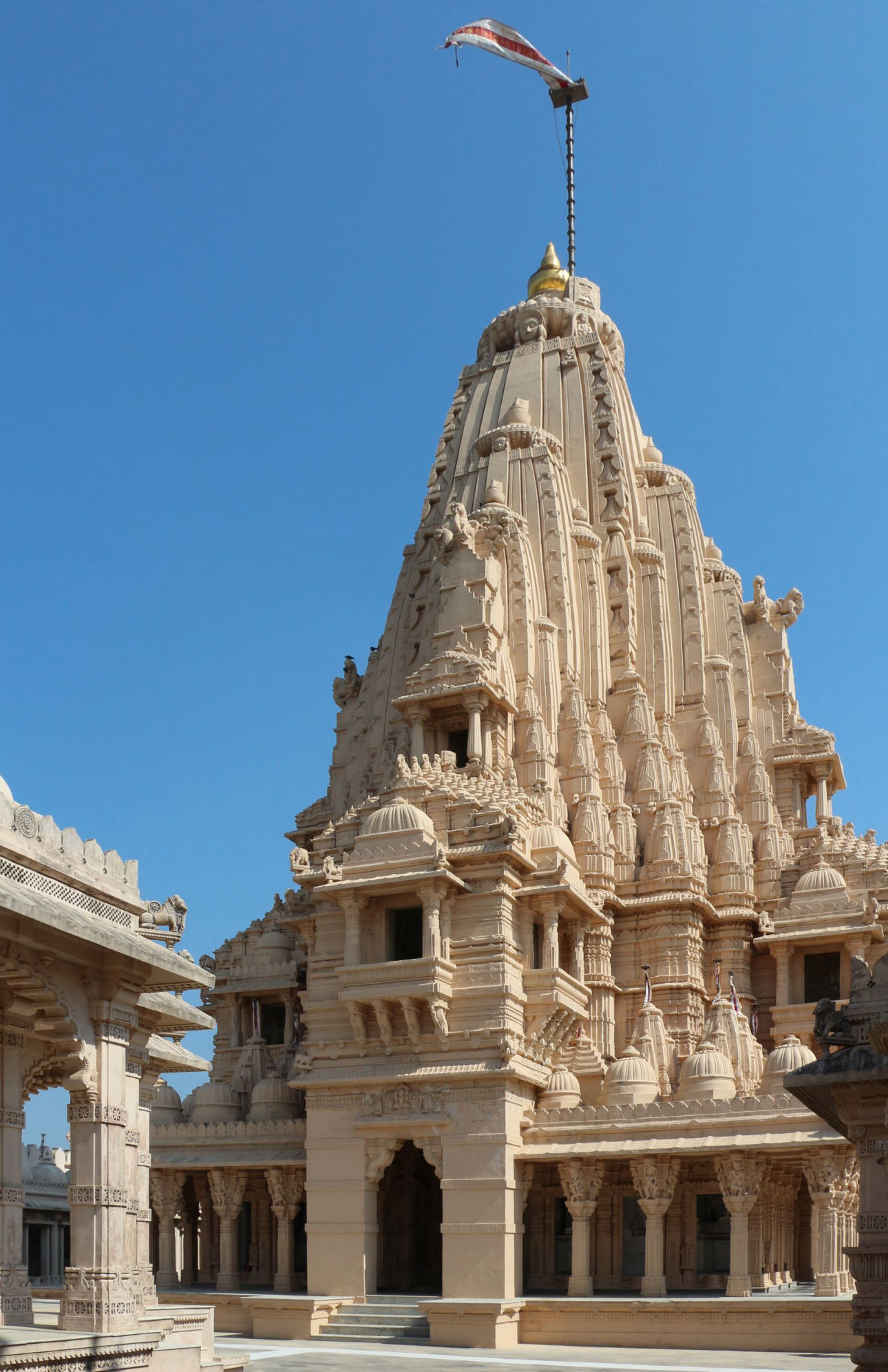
In the morning visit Palitana, the most sacred sites of Jainism. An extraordinary cluster of around 900 Jain temples crowns the twin summits of Palitana's Shatrunjaya Hill and covers the saddle linking them. According to Jain scripture, Shatrunjaya hill was the site where Adinath, the 1st Jain tirthankar, achieved enlightenment. Visit main temples on the South and North ridges. The most impressive of the main shrines is the 17th century Adinath temple on the northern ridge. Its ceilings, walls and supporting brackets are covered with carvings of saints, dancers, musicians and lotus blossoms. The southern ridge is dominated by the 16th century Adishvara temple. The main image within portrays Rishabhnath which is adorned with necklaces, a magnificent gold crown and crystal eyes. After lunch at Vijay Vilas Palace continue drive to Diu. On arrival, check-in to Radhika Beach Resort. Once known as the "Gibraltar of the East", Diu was a flourishing Portuguese colony from the 16th century onwards. It was ceded to India in 1961 and is today a Union Territory administered by the Central Government.
Radhika Beach Resort

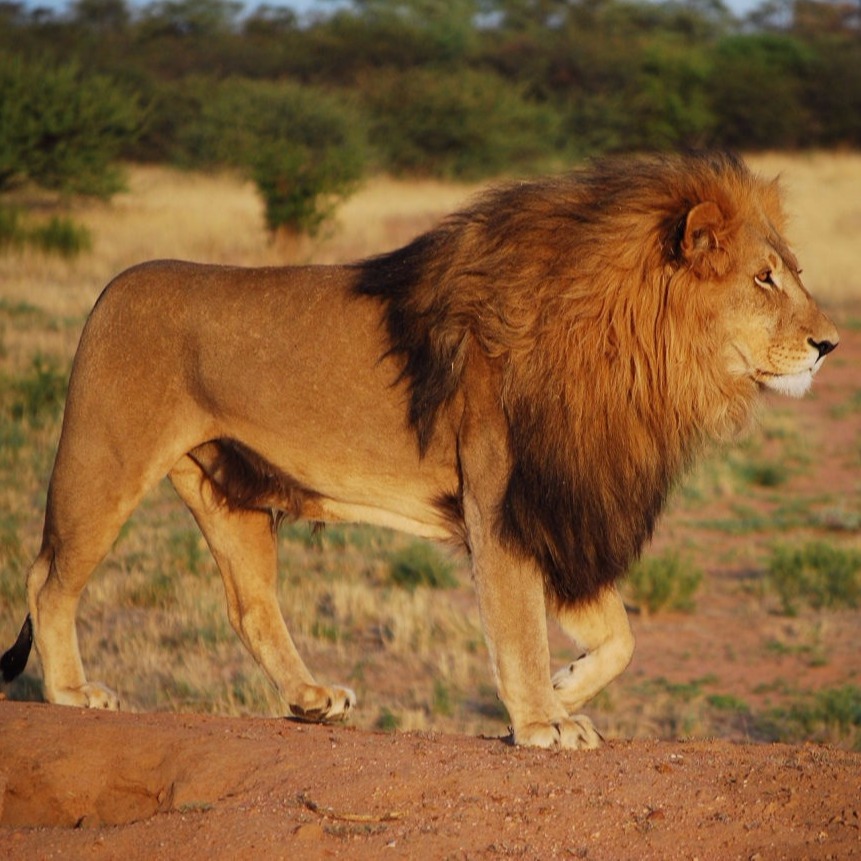
Enjoy a spectacular drive through scenic coastline to Somnath. Visit Somnath temple, one of the 12 most sacred sites dedicated to Lord Shiva, situated on the coast with a commanding view of the Arabian Sea. The temples legendary wealth made it the target of successive plundering armies beginning with Mahmud of Ghazni in 1026. The cycle of pillage and reconstruction at Somnath continued over the next seven centuries. The present temple was built in 1950. After visiting the temple drive a short distance of 30 miles to Sasan Gir and check-in to Lion Safari Camp. Enjoy wildlife safari to Sasan Gir National Park in the afternoon. Until a century ago, the Asiatic lion roamed vast areas of India. Now, Sasan Gir National Park is the only habitat left of the lion outside Africa. The park is a haven for a range of wildlife including the caracal, the four-horned antelope, the blackbuck and a substantial leopard population.
Lion Safari Camp


After breakfast, drive 38 miles to Junagadh, the heart of Saurashtra established by the Mauryan kings in the 4th century BC. Junagadh or "Old Fort" takes its name from the 4th century Uparkot fort built by Chandragupta Maurya. The fort is surrounded by massive walls over 66 ft high in places and a 295 ft deep moat inside the walls. An ornate triple arched gateway marks the entrance to the fort. Visit the deserted Jami Masjid. Its carved stonework and pillars show that it was constructed on the remains of a destroyed Hindu temple. Also visit the 2nd century Buddhist caves, the 11th century Navghan Kuan and Adi Charan Vav in the fort complex. Proceed to visit the Ashokan Rock Edict dating to 250 BC which conveys Emperor Ashoka's message of non-violence and peace. After sightseeing, continue drive to the fascinating old town of Gondal. It was the capital of the most progressive, affluent and efficient princely states during the British period. This exemplary state ruled by Jadeja Rajputs had an excellent road network, free compulsory education for children including girls, sewage systems and accessible irrigation for farmers. Arrive Gondal and check-in to Riverside Palace.
Riverside Palace

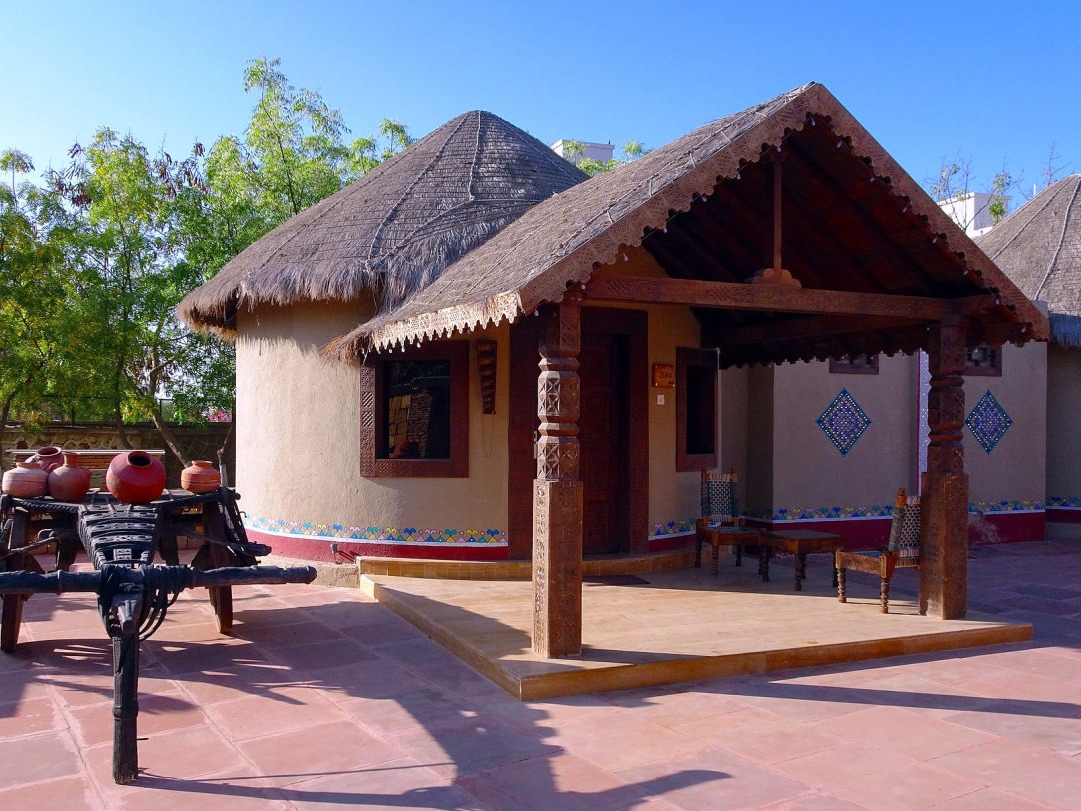
In the morning visit the Naulakha Palace. This palace with sculpted façade, pretty Jharoka windows and carved stone pillars, has an impressive Darbar Hall and museum of paintings, brass and silver. Also visit the Vintage and Classic Car Museum one of the finest in India. Later travel overland to Bhuj, the 16th century capital of Kutch. Until the earthquake of January 2001, Bhuj was a fascinating walled city, with beautiful palaces and havelis and a bazaar famous for its rich handicrafts and jewellery. It was the capital of the prosperous princely state of Kutch whose wealth derived from its sea trade with East Africa and the Persian Gulf ports. Arrive Bhuj and check-in to The Kutch Safari Lodge
The Kutch Safari Lodge


The surrounding areas of Bhuj are famous for Kutch appliqué and embroidery with beads, mirror-work, tie-and-dye, embroidery on leather, gold and silver jewelry, gilding and enameling, and colorful Namda rugs. The vast grasslands of Banni meet the Great Rann in the Khavda region, north of Bhuj. They are home to numerous pastoral nomadic, semi-nomadic and resident people who keep sheep, goats, camels, buffaloes and other livestock. The 40 or so hamlets here are best known for the minute detail of their embroidery. More recently, these villages have started focusing on selling handicrafts as their other source of income. Today visit artist villages located north of Bhuj including Sumraser artist village, the centre for the Sooph embroidery made without a plan by counting warp and weft of the material; Nirona village known for woodcarving and Rogan painting on cloth. Also visit famous artist villages like Dhordo and Hodka. These villages are known for leather embroidery and mirror work on cloth and clay. Return to Bhuj in the late afternoon.


Drive a short distance to visit Ajrakhpur weaving village famous for Ajrakh block-prints. Blocks carved in traditional designs are coated in dye and pressed onto cloth. Layers of colors and prints are added between stages of rinsing, dyeing and sun drying. You may wish to visit a weaver's house watch them at work. Proceed to Bhujodi, a major textile center of Kutch with the vast majority of the 1200 inhabitants involved in textile handicraft production. Here the weaver's produce traditional shawls, stoles, textiles and carpets with traditional motifs on pits and shuttle looms in local wool cottons and silks. Continue drive to Dasada and check-in to Rann Riders Safari Resort. The resort is situated near the village of Dasada, just a few minutes drive from the entrance of the Little Rann of Kutch Wild Ass Sanctuary. Late afternoon enjoy wildlife safari to the Wild Ass Sanctuary in the Little Rann of Kutch. This is the last home of the Asiatic wild ass, a handsome pale chestnut brown member of the wild horse family with dark stripe down the back. Nilgai, antelope and chinkara are other mammals seen in the sanctuary. Birdlife is abundant here. Houbara bustard, spotted and common Indian sand grouse, nine species of larks, desert warbler, desert wheatear, grey francolin and five species of quails are spotted in the sanctuary.
Rann Riders Safari Resort

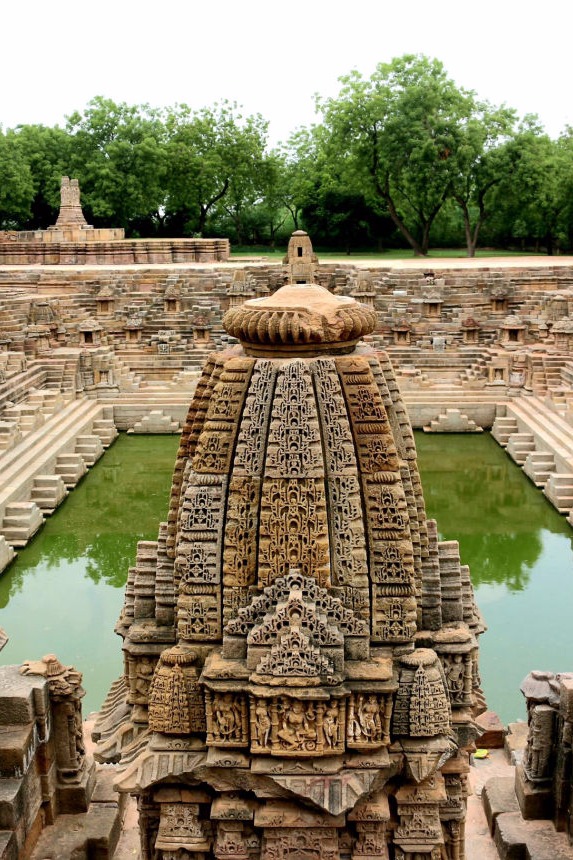
Drive to the 11th century Sun temple at Modhera. This temple is an excellent example of Solanki temple architecture and has survived Muslim iconoclasm and the 19th century earthquakes. It was built in 1026 by King Bhima I of the Solanki dynasty. It is so precisely laid out in an east-west direction that the sun's ray course through its chambers and strike the centre of the inner sanctum at high noon very day. The carvings on the walls depict a pantheon of Hindu deities as well as scenes from everyday life. Continue drive to Patan, the 8th century capital of the Hindu kings of Gujarat. Patan is famous for its beautifully carved Jain temples and fine Patola silk saris woven in the double Ikat technique by the last three remaining families of the Salvi group. The ruins of the old capital of Patan include an impressive step-well, Rani-ki-Vav and a water tank. This seven storeyed step-well is a splendid piece of architecture from the Solanki period and boast some 800 individual elaborately carved sculptures. It was constructed in the 11th century by Queen Udaymati as a memorial to her husband Bhimadeva. After sightseeing, drive to Ahmedabad and check-in to The Ummed Ahmedabad
The Ummed Ahmedabad


Today board your homebound flight with colorful memories that will add untold pleasure to last for a lifetime.
